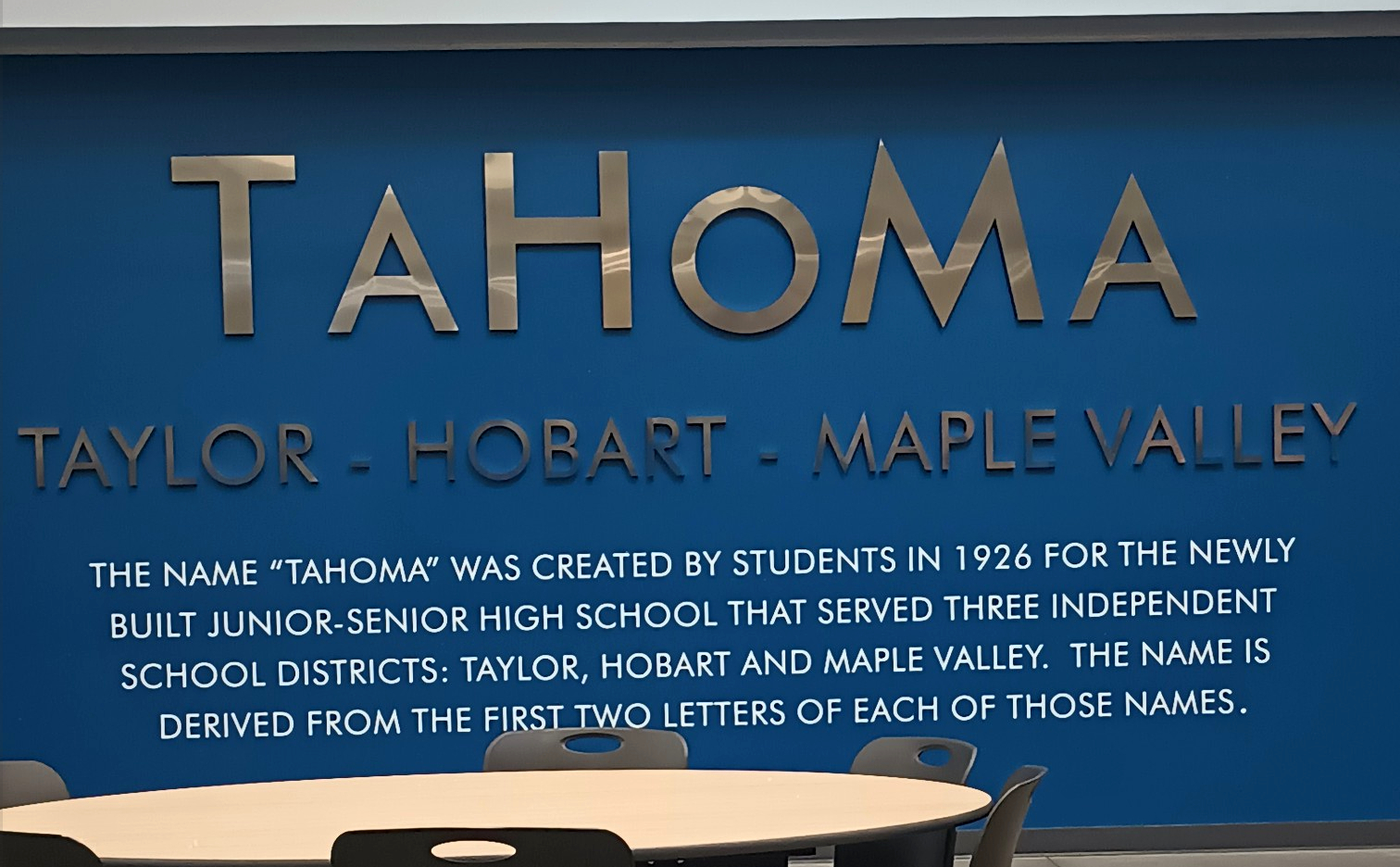In response to Tahoma School District’s use of the Tahoma name
by an Anonymous Community Member
While Tahoma School District’s long term assertion that Tahoma is a combination of “Taylor, Hobart, and Maple Valley” may be the recognized origin for this word for some folks in recent years, the legacy is much deeper. It is important to acknowledge our roots and the people that cared for and cultivated this land in which we are guests. Tahoma is the indigenous name for Mt. Rainer, and is what the Puyallup Tribe has known Mt. Rainer to be since time immemorial.
I am grateful and forever indebted to the indigenous peoples for their centuries of cultivation and care of the land that we so fruitfully thrive on – lands that were stolen. This is a debt we will never be able to repay. However, we can and should at least acknowledge the indigenous peoples and history that is the real birth of our incredible community.
Per the organization, Cascadia Department of Bioregion, “The people of the Puyallup tribe have known the mountain as Tahoma or Tacoma since time immemorial. The word has multiple meanings, all with bioregional relevance. By definition, Tahoma can mean mother of waters or that frozen water both recognizing the glaciated peak as the significant source that it is. The word is also understood to mean large snowy mountain, a trait it certainly exemplifies. Another etymological explanation derives from definitions of the name’s component parts in the Lashootseed language; Ta (larger/taller) Koma-Kulshan (name for Mount Baker). Farther afield names such as Talol and Ti’Swaq are also applied to the mountain, reflecting the relativity with which native place names must be approached.”
The school district does include a reference to the Lushootseed name on their Tahoma 100 page, but this needs to be more widely acknowledged. The naming wall at the high school prominently features the TaHoMa naming story, for example, with no reference to the original use of the name.
Maple Valley currently is occupying Muckleshoot Tribal Lands, who are descendants of the Duwamish and Upper Puyallup peoples.
- We acknowledge that we are on the traditional homelands of the Puyallup Tribe. The Puyallup people have lived on and stewarded these lands since the beginning of time, and continue to do so today. We recognize that this land acknowledgement is one small step toward true allyship and we commit to uplifting the voices, experiences, and histories of the Indigenous people of this land and beyond.
- ʔuk’ʷədiid čəł ʔuhigʷəd txʷəl tiiɫ ʔa čəɫ ʔal tə swatxʷixʷtxʷəd ʔə tiiɫ puyaləpabš. ʔa ti dxʷʔa ti swatxʷixʷtxʷəd ʔə tiiɫ puyaləpabš ʔəsɫaɫaɫlil tul’al tudiʔ tuhaʔkʷ. didiʔɫ ʔa həlgʷəʔ ʔal ti sləx̌il. dxʷəsɫaɫlils həlgʷəʔ gʷəl ƛ’uyayus həlgʷəʔ gʷəl ƛ’uƛ’ax̌ʷad həlgʷəʔ tiiɫ bədədəʔs gʷəl tix̌dxʷ həlgʷəʔ tiił ʔiišəds həlgʷəʔ gʷəl ƛ’uʔalalus həlgʷəʔ gʷəl ƛ’utxʷəlšucidəb. x̌ʷəla···b ʔə tiiɫ tuyəl’yəlabs. We gratefully honor and acknowledge that we rest on the traditional lands of the Puyallup People. The Puyallup people have lived on this land since the beginning of time. They are still here today. They live, work, raise their children, take care of their community, practice their traditional ways and speak the Twulshootseed language – just as their ancestors did.
This article was written by a community member who wished to remain anonymous, and provided to the Tahoma Values website. Do you have an article you would like to publish on our site? Please contact Tahoma Values at TahomaValues@gmail.com





